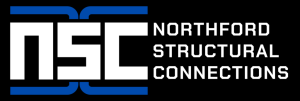

A detailed comparison of DTFC and traditional connection methods highlighting advantages and disadvantages.
Article Sponsored by:
Northford Structural Connections (NSC) specializes in innovative engineering solutions for enhancing the safety and durability of precast concrete structures. Their patented products, including the Double-Tee Flexible Connection (DTFC) and Double-Tee Connection Pro (DTC Pro), address critical challenges like fatigue, corrosion, and seismic resilience. With a focus on quality and longevity, NSC provides advanced connection systems trusted by industry professionals for both retrofitting and new construction projects.
In the realm of data communication, the methods used to connect devices can greatly impact performance, cost, and efficiency. One contemporary method of connection is DTFC (Dynamic Time-Frequency Coding), which has emerged as a strong alternative to traditional connection methods. This article delves into both DTFC and traditional connection methods, outlining the pros and cons of each to provide clarity on their applications and effectiveness.
Connection methods can be classified into traditional and modern approaches. Traditional connection methods often involve fixed frequency bands and are based on established technologies like wired connections (e.g., Ethernet) and fixed wireless standards (e.g., Wi-Fi). Modern methods, such as DTFC, employ dynamic coding techniques to enhance communication capabilities over various mediums.
DTFC represents a significant evolution in how devices communicate. By utilizing the time-frequency domain for data transmission, DTFC optimizes space and reduces interference. This technology adapts dynamically to varying environmental conditions and user demands, making it a compelling option for today’s fast-paced digital landscape.
DTFC can dynamically allocate bandwidth based on real-time demands. This feature maximizes the usage of available frequency spectrum, reducing waste and enhancing overall throughput.
The adaptability of DTFC allows it to work effectively in diverse environments. Its ability to adjust in real-time enables seamless communication regardless of external factors.
By using time-frequency coding, DTFC minimizes interference from other signals. This results in a clearer and more reliable connection, ensuring data integrity.
DTFC is inherently scalable. As more devices connect, it can adjust bandwidth allocations dynamically, which traditional methods often struggle to do without a drop in performance.
While DTFC offers numerous advantages, implementing this technology can be complex. Organizations may require specialized knowledge and skills to integrate and maintain DTFC systems effectively.
The transition to DTFC may involve high initial investment costs compared to traditional methods, particularly for infrastructure upgrades and training personnel.
Many organizations benefit from existing traditional connection methods, which are well-established and widely understood. This familiarity can lead to lower operational costs and reduced training requirements.
Traditional connection methods, such as wired connections, offer a high degree of reliability. They are less susceptible to environmental factors and interference, providing stable performance in consistent conditions.
Traditional connection methodologies often have straightforward implementation processes. From setup to maintenance, these methods tend to require less specialized knowledge compared to new technologies like DTFC.
Traditional methods can struggle to adapt to changing demands. Fixed bandwidth allocations may lead to underutilization in low-demand phases or congestion during peak usage.
With fixed frequency allocations, traditional connection methods often experience bandwidth bottlenecks. This limitation can hinder performance, particularly with multiple devices vying for connectivity.
As technology advances, many traditional systems remain reliant on older standards. This reliance can impede growth and innovation, leaving organizations at a competitive disadvantage.
When comparing DTFC and traditional connection methods, several key dimensions emerge: efficiency, flexibility, and reliability. DTFC shines in efficiency and flexibility due to its dynamic nature and ability to adjust according to real-time demands. Traditional methods, while reliable, often fall short in these areas.
DTFC efficiently utilizes bandwidth and adapts to user needs. Traditional methods, however, allocate fixed bandwidth, limiting efficiency and causing potential slowdowns.
DTFC offers substantial flexibility to adjust to changing environments, making it ideal for dynamic usage scenarios. In contrast, traditional methods may struggle under heavy load or varying conditions.
While DTFC reduces interference, established traditional methods provide reliability through their simplicity and proven performance. Organizations must weigh their need for consistency against the advantages of new technologies.
The shift towards DTFC presents valuable opportunities for improved data communication. However, traditional connection methods still serve a purpose in many organizational contexts. Understanding the pros and cons of each connection method enables businesses to make informed investments in their communication infrastructures.
In conclusion, organizations must assess their unique needs when choosing between DTFC and traditional connection methods. The decision should consider the importance of flexibility, efficiency, and reliability, ensuring that the best technology is deployed for their specific requirements.

Concrete Strength • Metal Resilience • Connecting Futures
Phone: (203) 777-0751
Email: admin@nscclips.com
News Summary The Table Rock Fire at Table Rock State Park in South Carolina has…
News Summary An 18-year-old driver from Florida lost his life in a devastating crash on…
News Summary A 12-year-old girl was airlifted to a Savannah medical center after sustaining a…
News Summary The Illinois General Assembly has passed Senate Bill 328, a significant law aimed…
News Summary A significant settlement of $8.5 million has been awarded in a wrongful death…
News Summary Kilmar Abrego Garcia, a Maryland resident, is facing multiple federal charges after being…